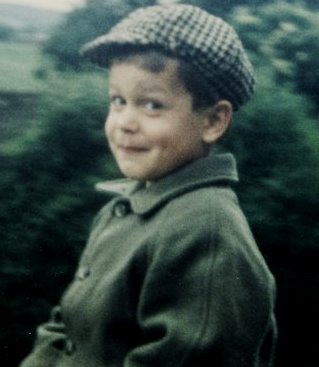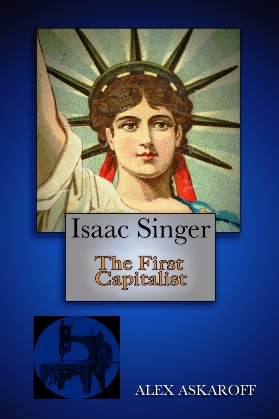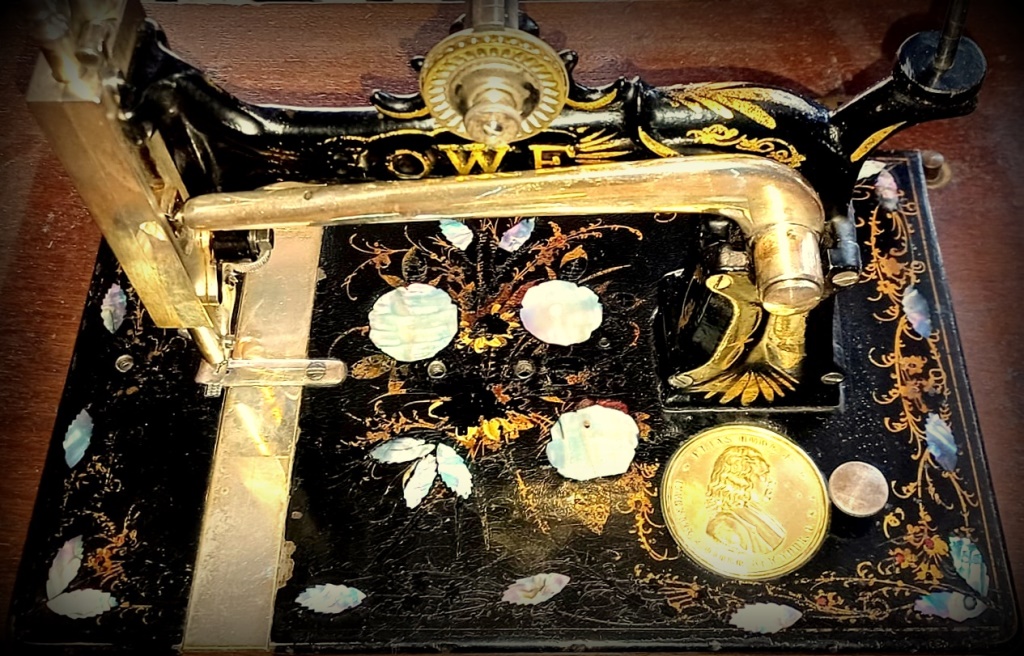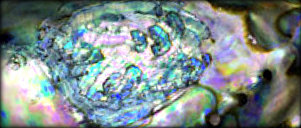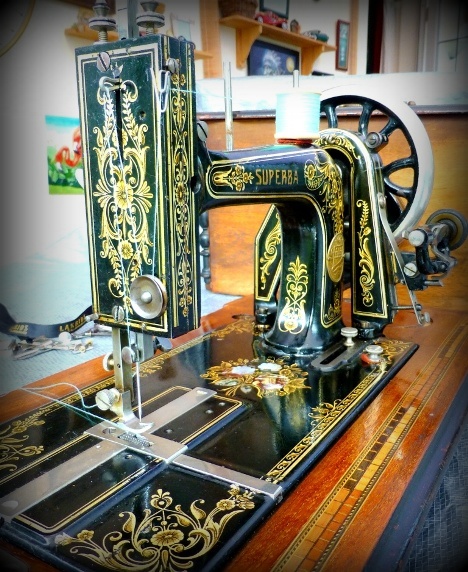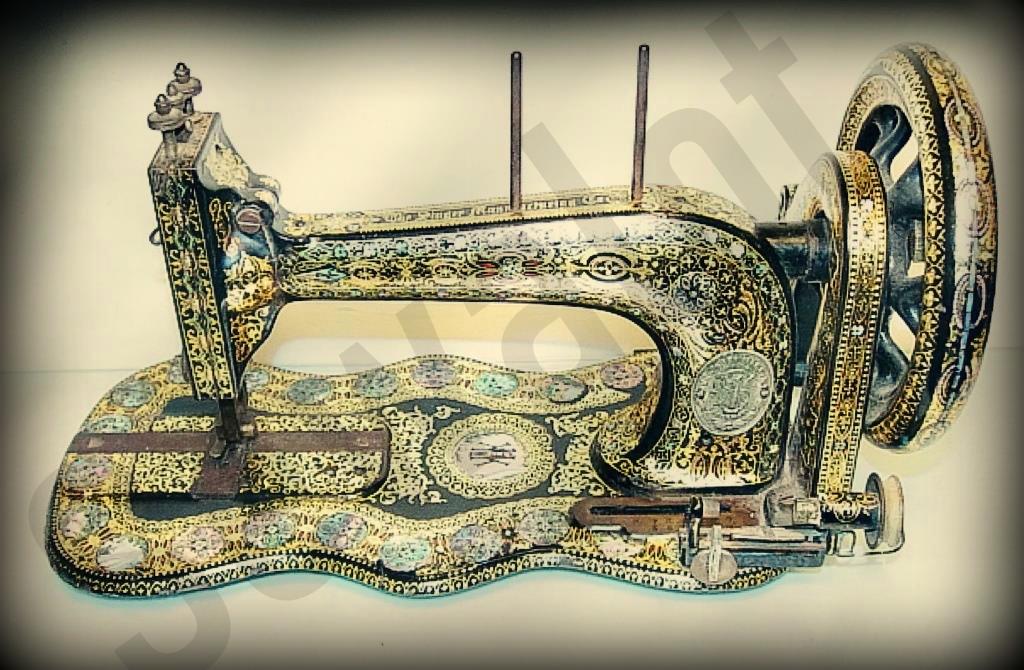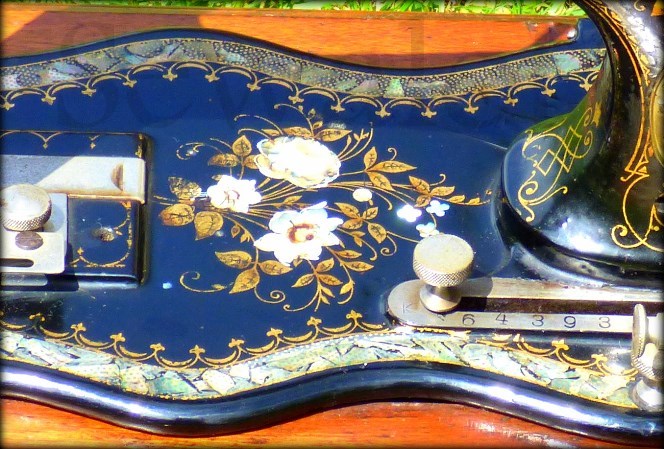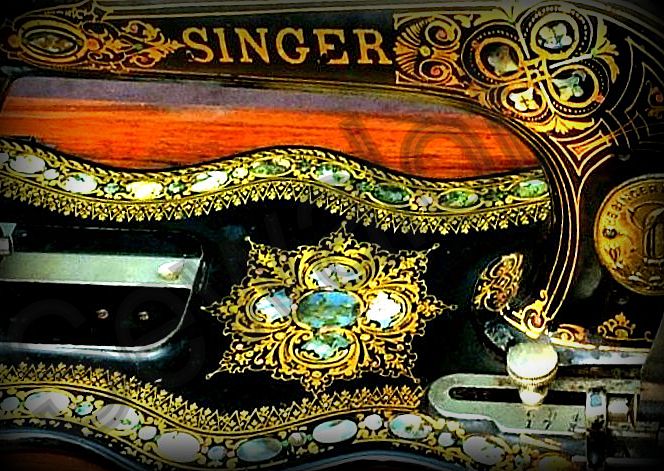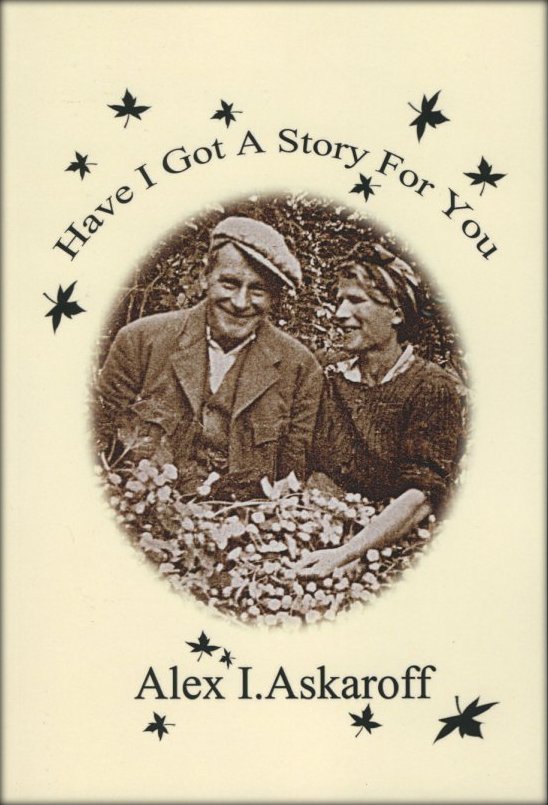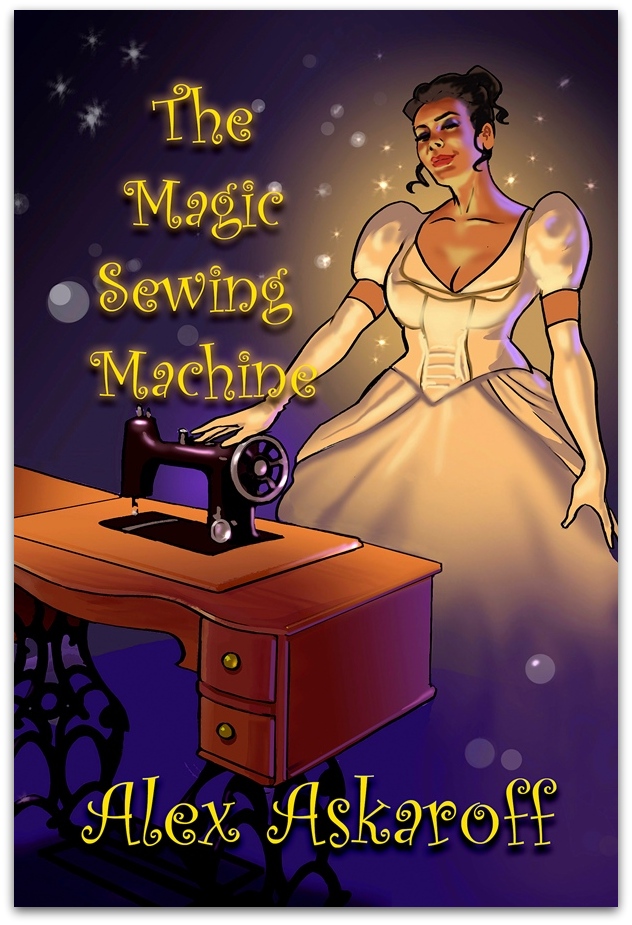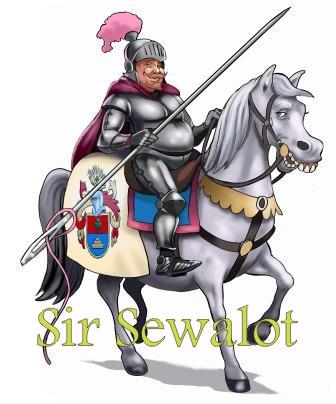|
||||
|
|
Alex I Askaroff
Alex has spent a lifetime in the sewing industry and is considered one of the foremost experts of pioneering machines and their inventors. He has written extensively for trade magazines, radio, television, books and publications worldwide.
Over the last few decades Alex has been painstakingly building this website to encourage enthusiasts around around the Globe.
See a day in the life of a sewing machine engineer: Alex Askaroff A stitch In Time. Alex has had a million views on You Tube, see why! Most of us know the name Singer but few are aware of his amazing life story, his rags to riches journey from a little runaway to one of the richest men of his age. The story of Isaac Merritt Singer will blow your mind, his wives and lovers his castles and palaces all built on the back of one of the greatest inventions of the 19th century. For the first time the most complete story of a forgotten giant is brought to you by Alex Askaroff. |
|||
|
Mother of Pearl sewing machines
Let's first talk about 'Japanning'. Many early sewing machines were covered in a tough black gloss, a process that became known as 'Japanning'. This European 'Japanning' was applied to all the main surfaces of the sewing machine and baked in an oven to harden. Japanning proved to be one of the best ways of protecting the cast iron sewing machines with a luxurious and hard wearing surface. Here is what I have uncovered over the years about this fascinating and useful invention (that was really a bit of a mistake). Guess where 'Japanning' originated? If you did not guess Japan go and sit in the back of the class for a hour! Actually, although the Japanese had perfected a black shiny 'varnish', it was popular in Asia and China for centuries, basically as decoration for pots and other objects. Even the Egyptians used a form of Japanning for preservation of bodies. So why did the Europeans call their very different black enamel coating Japanning? Let me try and explain. During the late Elizabethan Age, around the 1580's, ships started arriving from the Far East crammed with wonderful goodies, furniture, pots, boxes, and many other items. Silver and glass from China, amazing silk from India, beautiful cabinets and pots from Japan, and a million other items, all to trade with the wealthy Europeans. They were soon gobbled up by wealthy buyers. From then on the European makers copied the big-sellers from the Far East. Funnily, the Far East copied whatever they thought would sell over here, including dolls house furniture in stunning black lacquer and gold decoration. Today this has led to things like antique silver, that had been classed as Chinese, turning out (with modern forensic testing) to be English and just made to look Chinese! Black lacquered items became incredibly popular with their lovely shiny coating. The Europeans tried making this wonderful delicate covering but rarely got close. Over the next few centuries a thousand recipes were tried. Most failed but they became known collectively as 'Japanning', 'Japan Blacking' or 'Japan Black' after the original Far Eastern products. In reality the thick European gloss had almost no similarity to the fine Japanese black lacquer varnish. The final European 'Japanning' was much closer to black enamel than varnish. While not much good for wood and the like, it turned out to be great for hard wearing surfaces like the cast iron sewing machines (which had previously just been painted black and wore quickly with use). So, now that I have hopefully explained the difference between our thick enamel and the delicate Japanese lacquer that it's named after, let's look as the best example of European 'Japanning' that was ever invented (incidentally by the sewing machine makers). It was so good that black enamel 'Japanning' first used in the 1860's was used on sewing machines right up until plastic finally took over in the 1980's. 19th Century Recipe for Sewing Machine Japanning Originally the sewing machine coating we now call 'Japanning' was a mixture of naturally occurring substances such as turpentine oil and Ashphaltum but by the 1880's a petroleum based coating took over in the sewing industry. Early mixtures were not all the same but here is one recipe I was told about. Naples Asphaltum, Gum Anime (from the Jatoba tree) and linseed oil. Basically you boil the lot up for a few hours then dip in the item (you want covered) and allow it to dry. Sometimes the mixture was darkened with finely ground charcoal or something similar. Sewing machines needed several coats of Japanning to give them the thickness needed for hardwearing protection. Each coat was baked in an oven for hours before repeating the process. It was time consuming and expensive BUT gave the sewing machines an almost indestructible coating. So how do you make it even better? You add some bling! Mother of Pearl on sewing Machines
Pearling Now, after Japanning ALL sewing machines were decorated, some with gold leaf, some hand-painted, some with transfers and decals. But a precious few had Mother of Pearl added, which looks utterly beautiful. It made the 'precious few' sewing machines that were chosen for 'pearling' more a thing of beauty than just an object of work. These machines were advertised and sold as 'pearled'. Nearly all the major sewing machine manufacturers attempted some Mother of Pearl sewing machines. It peeked during the late 19th Century heyday. Mother of Pearl was mainly made from several natural shells such as Abalone, edible sea snails, common Oyster shells, Nautilus shells, Nacre and more. The most commonly used MOP decoration was Abalone or 'Sea Ears'. They are widespread in coastal waters around the world. The Abalone cling to rocky surfaces with a strong foot. They feed by filtering out algae from the tides. As they grow they develop a beautiful inner shell varying in colour from shiny pink to silvery white. Purples, greens and blues are also found. They have a similar makeup to oyster pearls and shimmer with an iridescent light. Mother of Pearl is also hard wearing, making it still popular in jewellery to this day. It is actually the earliest form of decoration still used by humans. The Superba High Arm Mother of Pearl sewing machine, circa 1890
By far the most extraordinary Mother of Pearl sewing machine to cross my path was back in early 2005. I started receiving mail from America to Australia asking questions about it. The story was brilliant, if a little far fetched. Whatever the truth this was one super special machine. The story goes that it was made for none other than Isaac Merritt Singer's favourite daughter, Winnaretta Singer. She had it monographed with her future husband's initials, KM on the central bed. The machine was advertised as possibly owned by Prince de Key Montebrand. It's a great story. Is it true? Who knows. What we do know is that the machine (originally set in a treadle) is astounding. It sold in February of 2005 for $650 and within a few weeks it went for $2,800. Rumours had it that Carter Bays, the American collector grabbed it. Either way, whatever the truth, it was certainly created for someone exceptional. I mean have you ever seen anything like this?
Industrial sewing Machine espionage Sounds funny doesn't it, sewing machine espionage! However back in the 19th Century the biggest companies in the world (bedside the arms manufacturers) were the sewing machine makers (apparently over 300 in Germany alone). As much as the sewing machine manufacturers tried to protect their secret methods, they all failed miserably. Singer had so many people in so many areas it would prove impossible to protect many of their inventions. The Kilbowie site alone apparently had over 15,000 staff in its heyday just before WW1. Before long most European makers were producing near identical sewing machines to Singer, with near identical finishes. By the First World War companies were openly grabbing what they could. Makers like Vickers simply copied the Berlin Frister & Rossmann shuttle machine. There was nothing anyone could do. Now, lets move on from industrial sewing machine espionage and get back to our superb Mother of Pearl inlays. The main bed area on the very best machines was sometimes decorated with Mother of Pear and gold. By the late Victorian period nearly all the European sewing machine manufacturers were using MOP for their premier machines. Frister & Rossmann, the biggest and best German makers of the period made some stunning MOP machines. Mother of Pearl was exceptional and short lived in the sewing trade.
Initially, broken chips and shapes were placed in the layers of Japanning. But, as the craft blossomed, complex Mother of Pearl shapes were cut and crafted onto the finest sewing machines. Craftsmen cut out delicate shapes in the pearl shells and stuck them, in many designs, onto the sewing machines. Then, several coats of Japanning were added, completely covering the Mother of Pearl. After baking (and cooling several times) the laborious task of scraping and polishing down the japanning took place, until the Mother of Pearl was revealed. This task could take over 20 hours of polishing but it leaves the Mother of Pearl and the black japanning perfectly level. The Mother of Pearl shines out of the blackness like stars in the night sky.
Many Singer Mother of Pearl sewing machines are 'one-off' specials and very rare today. I had been in the sewing trade for over 30 years before I saw my first Singer with Mother of Pearl inlay. It was the most beautiful 'pearled' sewing machine that I had ever seen. With the rise of the Internet they have turned up (in very limited numbers) all over the world. Here is a clip of one amazing machine in my Sewalot Collection, Alex Askaroff A stitch In Time.
The whole machine was then decorated with gold, (around and over the Mother of Pearl). The result is was a stunning piece of work looking more like jewellery than a machine for sewing. Only the most expensive sewing machines had Mother of Pearl added as the time, work and cost was enormous. The end of Mother of Pearl on sewing machines By the early 1900's, with labour costs rising and competition raging across Europe, it became uneconomical to add MOP to sewing machines and the decoration slowly faded out in the sewing machine industry. The heyday for Mother of Pearl sewing machines was the latter part of the Victorian Era, between 1870-1899. So there we have it, 'Japanning' (which has almost nothing in common with varnished goods from Japan) and the wonderful Mother of Pearl on sewing machines. I hope you enjoyed this little trip down history lane and have learnt something quite interesting...Bye for now.
|
||||
|
Most of us know the name Singer but few are aware of his amazing life story, his rags to riches journey from a little runaway to one of the richest men of his age. The story of Isaac Merritt Singer will blow your mind, his wives and lovers his castles and palaces all built on the back of one of the greatest inventions of the 19th century. For the first time the most complete story of a forgotten giant is brought to you by Alex Askaroff. News Flash! Alex's books are all available to download or buy on Amazon...worldwide.
"This
may just be the best book I've ever read."
"My five grandchildren are
reading this book aloud to each other from my Kindle every Sunday.
The way it's written you can just imagine walking
beside him seeing the things he does. News Flash! Alex's books are now all available to download or buy as paperback on Amazon worldwide.
|
||||
|
Well that's it, I do hope you enjoyed my work. I have spent a lifetime collecting, researching and writing these pages and I love to hear from people so drop me a line and let me know what you thought: alexsussex@aol.com. Also if you have any information to add I would love to put it on my site.
Fancy a funny read: Ena Wilf & The One-Armed Machinist See Alex Askaroff on YouTube with a total of over a Million Views! http://www.youtube.com/watch?v=8-NVWFkm0sA&list=UL Sir Sewlot, protector of the Sewalot Site
|
||||
|
|
|
|||
|
CONTACT: alexsussex@aol.com Copyright ©
As a
new collector I have found your site
has increased my knowledge in
a short time to a degree
that I couldn't have
imagined.
|
||||
